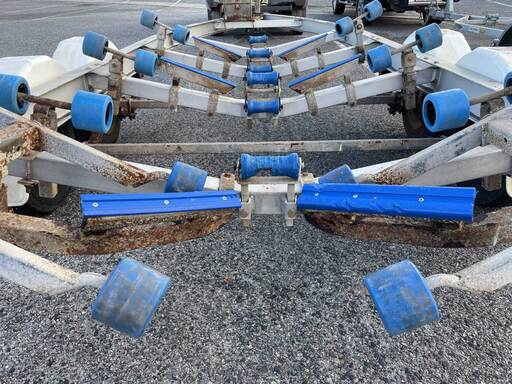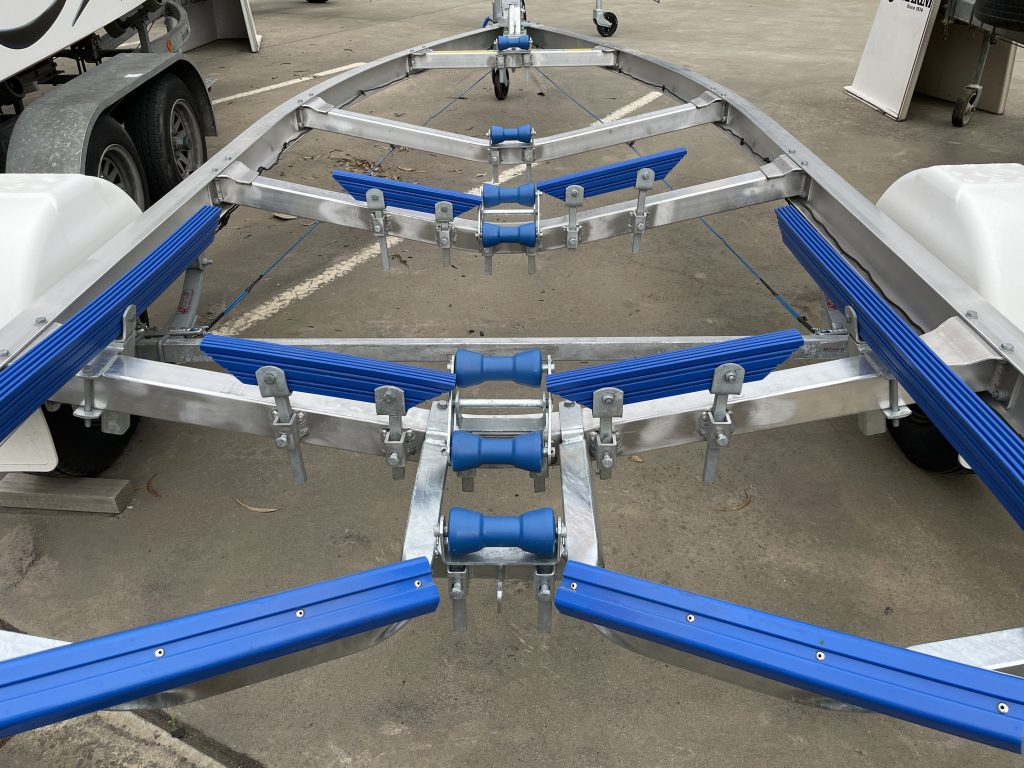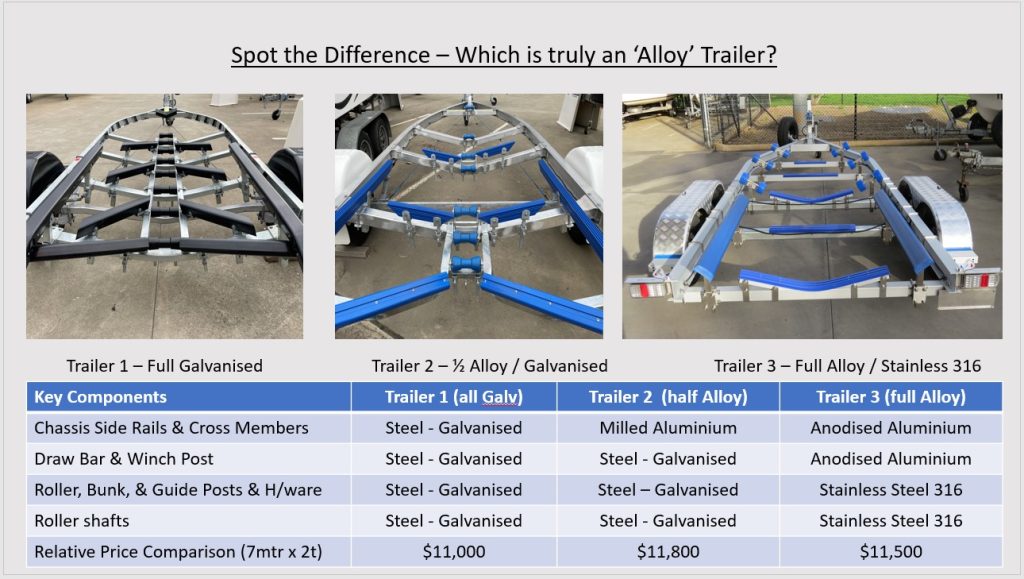
SPOT THE DIFFERENCES – ALLOY TRAILERS
We have met many people who have proudly purchased an Alloy (Aluminium) trailer – especially following their experiences with a rusted steel trailer. But from questions put to us while fielding inquiries, we know that many people do not know what to look for in their new Alloy trailer to make sure they get the outcome they’re seeking.
During a recent visit to a boat ramp, we saw an Alloy trailer that perfectly illustrates the importance of being able to choose wisely and ‘Spot the Differences’ between trailer types. It’s also very important to be clear on the expectations for a new trailer, and therefore to shop around for what best suits needs and the intended application.
The trailer pictures show two of the same make of Alloy trailers, supplied by the same Australian manufacturer. One picture shows what people would see when it’s new, and the other the same construction and of the same make, 7 years later. There is significant rust and loss of functionality visible. For anyone thinking they’re buying an Alloy trailer for the perceived benefits of lasting well and requiring lower maintenance, the extent of visible rust and deterioration would be a huge disappointment.


What therefore is the point in buying an Alloy trailer and what must one look for?
Alloy trailers have many advantages. The main benefit is that Alloy is naturally resistant to salt corrosion compared to mild Steel (galvanised). And therefore, the expectation is that an Alloy trailer will last longer and require less maintenance and repair. Alloy is also a lighter material, and this facilitates a higher payload. However, the detail to look for is in the construction of the trailer, taking note of the key components and what they are really made of.
Below is a tabulation of 3 trailers, illustrating the simple but important differences in construction material used. The trailer illustrated above is shown as trailer 2.

It’s clear from these pictures and the tabulation that many Alloy trailers are sold as ‘Alloy’ trailers… but are only part-Alloy and rely on galvanised steel in exactly the same way as is used on a fully galvanised trailer. As a buyer, it’s important to understand that any galvanised steel item used will perform only as well as it does on a galvanised trailer! And if you wish your new Alloy trailer to last longer than your old rusty Galvanised trailer, then you must choose a trailer that minimises the use of Galvanised Steel and maximises the use of rust corrosion-resistant material.
One reason for the use of steel in conjunction with Alloy in trailer 2 is due to the low strength of the untempered Alloy for key components such as the drawbar and winch post. Being untempered, the Alloy is easily bent, welded, and formed. This is a benefit in construction but is a downfall in longevity because there needs to be a corresponding dependence on galvanised steel for key components, and there is therefore no significant benefit to using the part-Alloy.
Trailer 3 is a Spitfire Trailer. This Alloy is hardened and Anodised – and this means it has the strength required for the drawbar and other components. The use of stainless steel for the hardware, brackets, posts, etc is the obvious choice to ensure you have the option of a trailer that is truly designed for longevity compared to traditional galvanised or part-Alloy options.
Happy Boating
Andrew van Ryneveld
